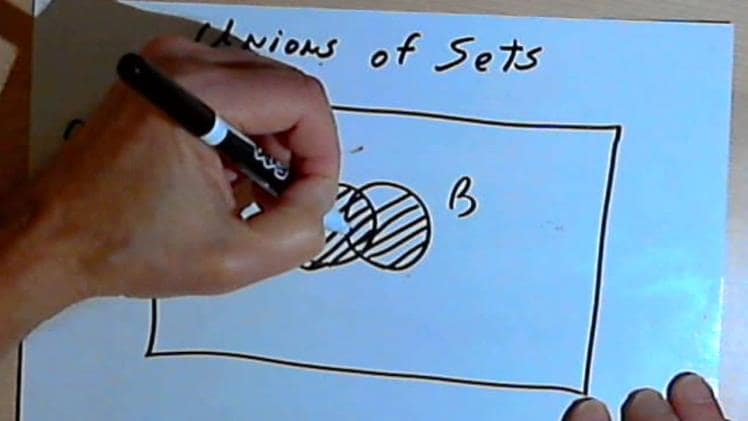In mathematics, we perform operations such as addition, subtraction, multiplication, and so on. Similarly, in set theory, certain operations are typically done on two or more sets to produce a new set of items based on the operation. Sets, as we all know, can be subjected to a variety of operations, the most basic of which are as follows:
- Union of Sets
- Intersection of Sets
- Difference of Sets
The number of elements carried by the operation and executing the result of a collective set is represented by the Union and Intersection of Sets. In the case of union, all elements are included in the result, whereas in the case of intersection, only the common elements are considered.
Let’s look at certain operations like the union and intersection of sets one by one in detail.
Union of Sets
The union of two sets is defined as the set that contains all of the items of both sets A and B. The phrase “OR” is used to denote the union of a set, which signifies that if the data appears in either A or B, it will be included in the set’s Union. “∪” is the symbol used to represent the Union of a Set. The standard definition is as follows: if x∈A∪B, then x∈A or x∈B.
A good example of a practical The union of two sets can be two friends inviting their other friends to a party; however, there is a high possibility that they have friends in common; therefore, the friends who are common are only invited once, and the rest of the friends are also invited; this is what the union of a set of friends will look like.
Properties of Union of Sets
- Commutative Law: The union of two or more sets obeys the commutative law, which states that if we have two sets A and B, then,
A∪B=B∪A
- Associative Law: The union operation follows to the associative law, which states that if we have three sets A, B, and C, then,
(A ∪ B) ∪ C = A ∪ (B ∪ C)
- Identity Law: The union of an empty set and any set A yields the set itself, that is,
A ∪ ∅ = A
- Idempotent Law: Any set A union with itself yields the set A, i.e.,
A ∪ A = A
- Domination Law: A universal set U and its subset A are joined to form the universal set itself.
A ∪ U = U
Intersection of Sets
Set intersection is defined as the set that contains all common elements from both sets A and B. The intersection of the sets is represented by the word “AND,” which implies that the elements in the intersection are present in both A and B. The symbol used to represent the set’s Intersection is “∩”. The standard definition is as follows: if x ∈A∩ B, then x∈A and x∈B.
Consider two buddies having a party and inviting only their common friends. They typed down the names of their pals, then looked for common friends and invited only those; this is known as the Intersection of the set of friends.
Intersection of Sets Properties
The following are some properties of the Intersection Operation:
- Commutative law: The intersection of two or more sets obeys the commutative law, which states that if we have two sets A and B, then,
A ∩ B = B ∩ A
- Associative law: The intersection operation follows to the associative law, which states that if we have three sets A, B, and C, then,
(A ∩ B) ∩ C = A ∩ (B ∩ C)
- Law of φ and U: In intersection, we have all elements which are common. Since φ has no elements, there will be no common element between φ and A.
Therefore, φ ∩ A = φ
Since U has all the elements, the common elements between U and A will be all elements of A
Therefore, U ∩ A = A
- Distributive law: A ∩ (B U C) = (A ∩ B) U (A ∩ C), i. e., ∩ distributes over U

